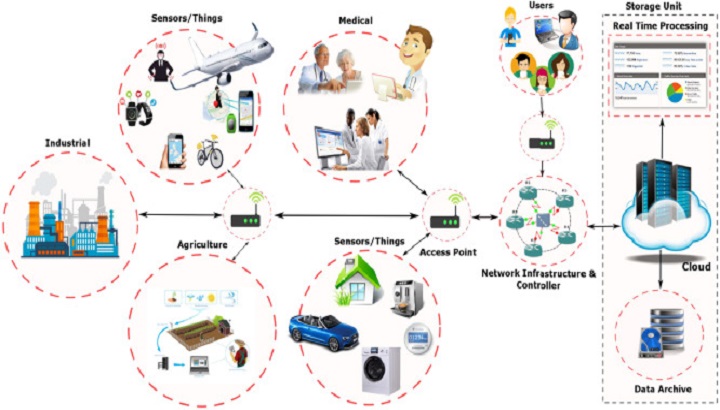Real Time Anomaly Detection for Network Traffic Patterns using Machine Learning

The client-side data generator simulates network traffic by generating data packets with various features, including packet size, source, destination, and timestamp. These data packets are sent to the server for real-time analysis. Additionally, the system supports integration with external sources of network data, such as ping statistics or network logs, enabling comprehensive anomaly detection.
The effectiveness of the system is evaluated through extensive testing using both simulated and real-world network data. Performance metrics, including detection accuracy, false positive rate, and response time, are measured to assess the system's reliability and efficiency. The results demonstrate the system's ability to accurately detect and respond to anomalies in real-time, enhancing network security and resilience against emerging threats.
Overall, the proposed real-time anomaly detection system offers a scalable and adaptive solution for safeguarding computer networks against malicious activities and unauthorized access, thereby ensuring the integrity and availability of critical network infrastructure.
Problem statements
- Processing Overhead: If the anomaly detection system requires significant computational resources, such as CPU or memory, it may introduce processing overhead. This overhead could potentially impact the performance of network devices or systems running the detection algorithms.
- Network Bandwidth: Transmitting and analyzing network traffic data for anomaly detection may consume additional network bandwidth. If the volume of data being analyzed is substantial, it could potentially saturate network links or cause congestion, leading to slower network speeds for other traffic.
- Slow Detection Times: Many systems take too long to detect network anomalies, leaving networks vulnerable to attacks.
- Too Many False Alarms: Existing anomaly detection systems generate too many false alarms, causing confusion and wasting resources.
- Complex Traffic Patterns: The intricate nature of modern network traffic makes it challenging to distinguish between normal and malicious activity.
- Need for Diverse Data Sources: Anomaly detection systems often overlook valuable data from different sources like network logs and application metrics.
- Difficulty in Understanding Alerts: Alerts from current systems are often hard to understand, making it challenging for analysts to respond effectively.
- Ineffective Security Measures: Current methods to protect computer networks are often unable to keep up with rapidly evolving cyber threats.
- Confusing Alerts: Security systems frequently generate alerts that are difficult to interpret, leading to delays in response and potential oversight of critical threats.
- Slow Response Times: Anomalies in network traffic are not detected promptly, leaving networks vulnerable to attacks and data breaches.
Related project idea for free
AI-Based Smart Security System
Security systems are essential for homes, offices, and industries, but traditional systems often rely on simple motion detection, which can generate false alarms. This project implements an AI-based intruder detection system using computer vision and deep learning. The system uses YOLO or OpenCV...
Read more>>AI-Powered Smart Farming System
This project integrates soil moisture sensors, temperature sensors, and weather forecasting data to create an intelligent farming assistant. AI algorithms analyze the soil's moisture content and predict the best irrigation schedule, reducing wate...
Read more>>AI-Based Health Monitoring System
This project involves designing a wearable health monitoring system that continuously tracks heart rate, body temperature, blood oxygen levels (SpO2), and other vital signs using sensors like MAX30100, DS18B20, and DHT11. The collected data is processed using machine learning algorithms to identi...
Read more>>AI-Powered Smart Traffic Management System
Traffic congestion is one of the biggest challenges in modern cities, causing delays, pollution, and inefficient fuel consumption. This project leverages computer vision and deep learning to analyze real-time traffic footage from CCTV cameras. The...
Read more>>



